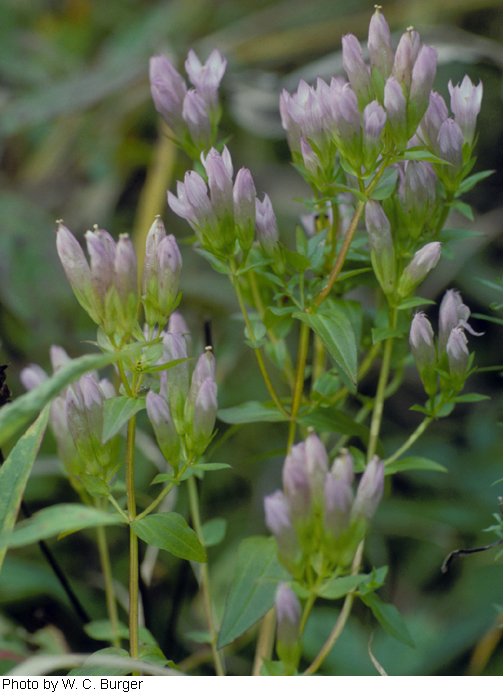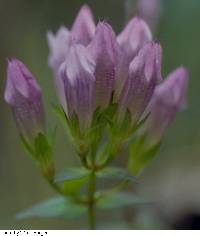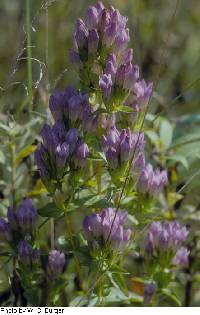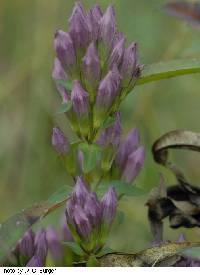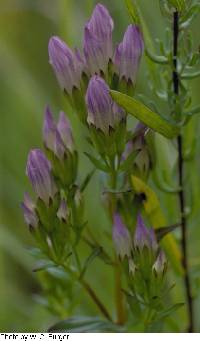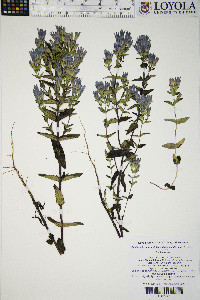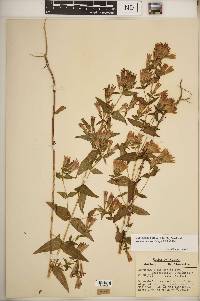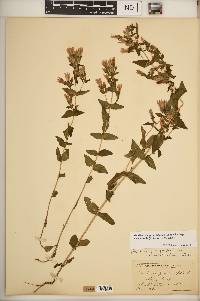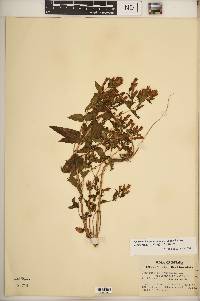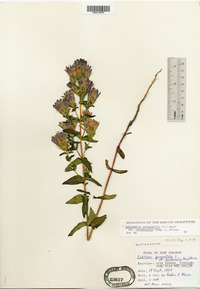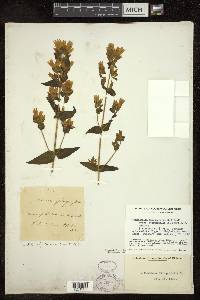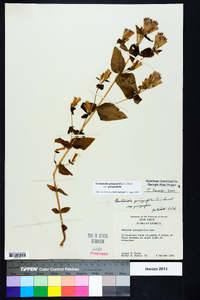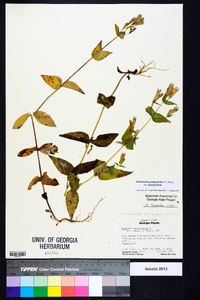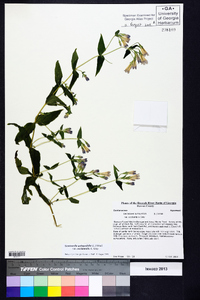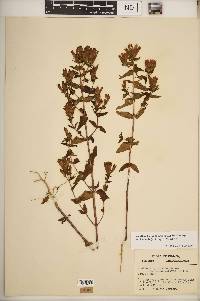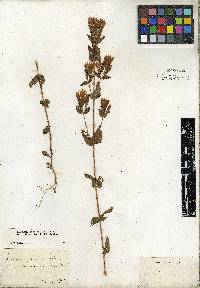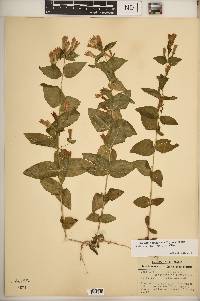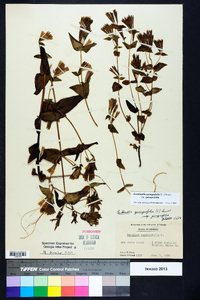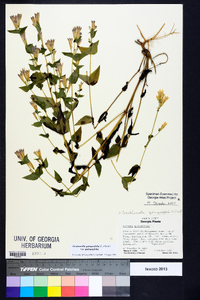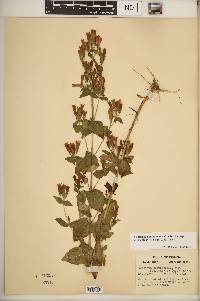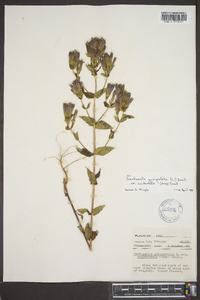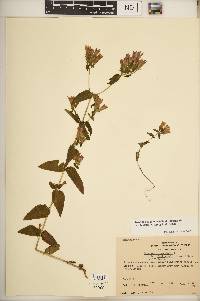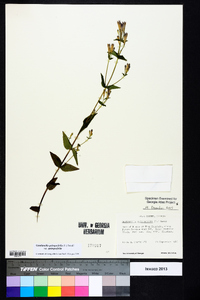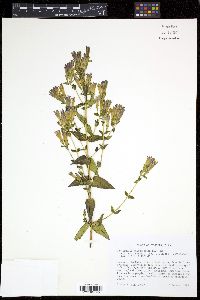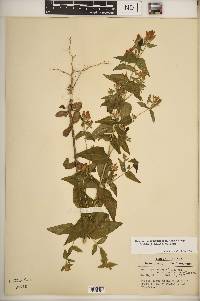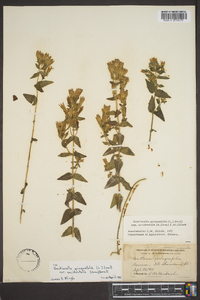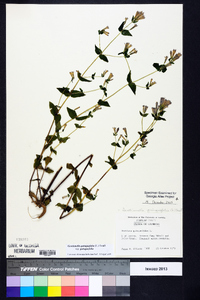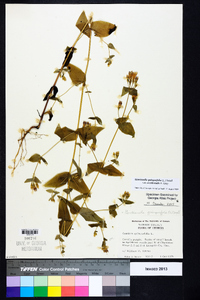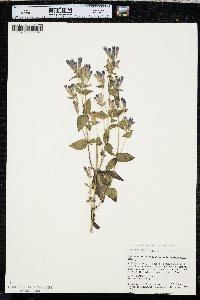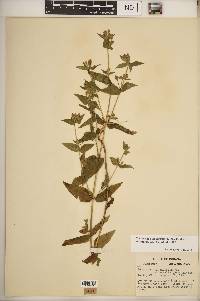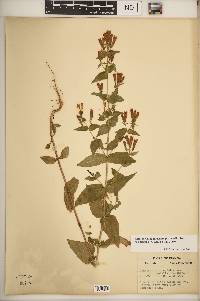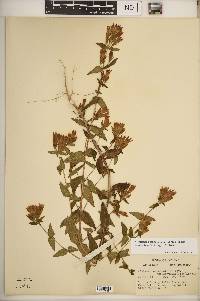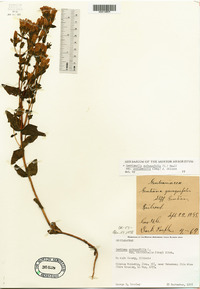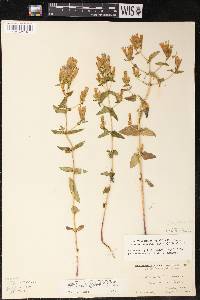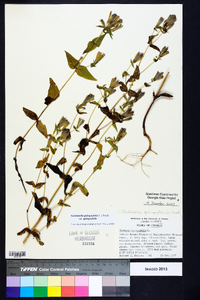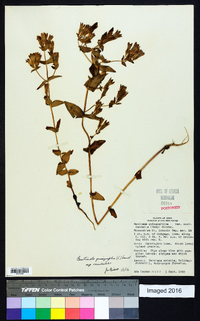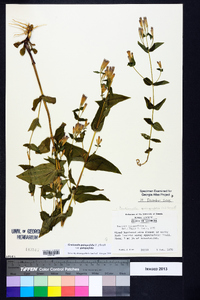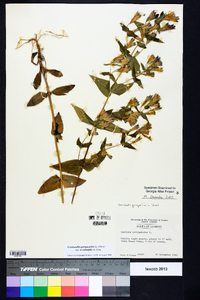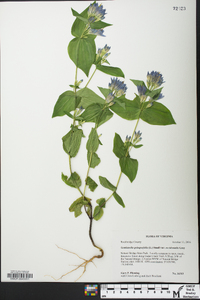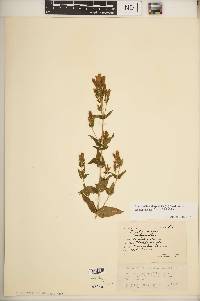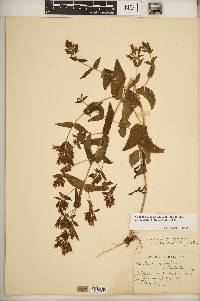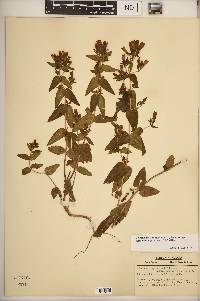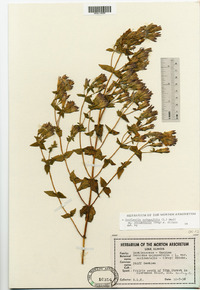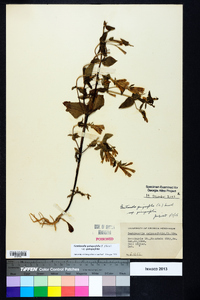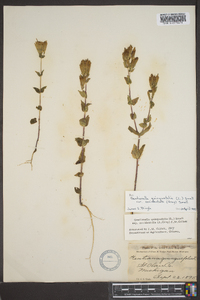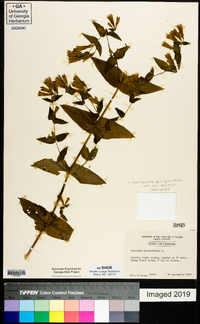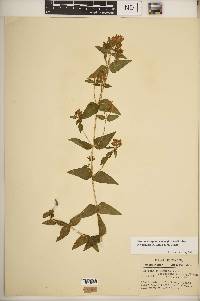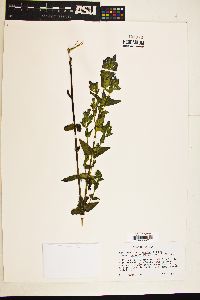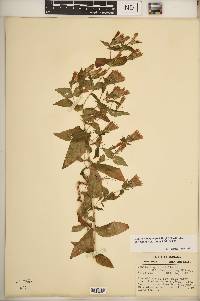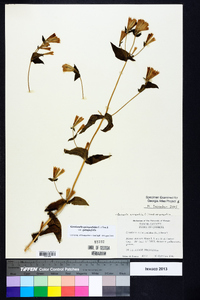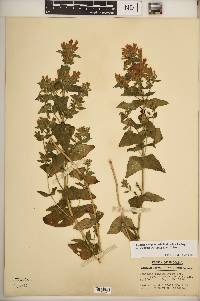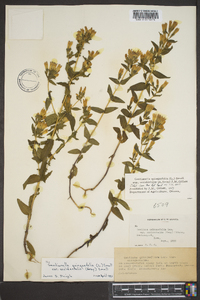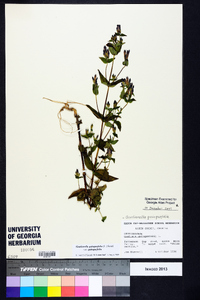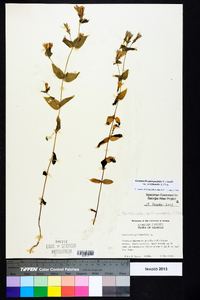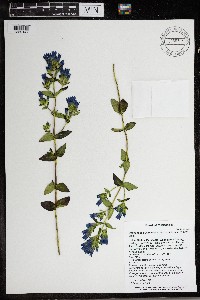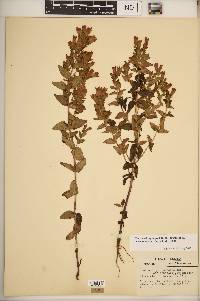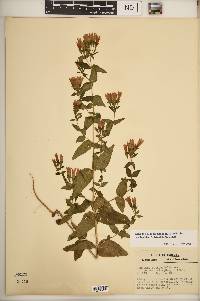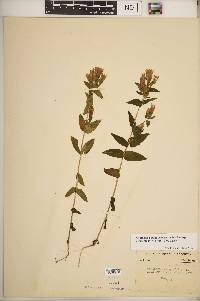
|
|
|
|
Family: Gentianaceae
Agueweed
[Gentianella quinquefolia var. occidentalis] |
Annual or biennial herb 20 cm - 0.8 m tall Stem: simple or branched, always with wings of tissue along the angles. Leaves: opposite, stalkless, non-toothed, thin, 0.5 - 8 cm long, 0.2 - 3.5 cm wide, somewhat egg-shaped to oblong, always longer than wide, with pointed tips, and a clasping, rounded base. Flowers: short-stalked, blue-purple to pale violet (or greenish-white in one form), relatively small (less than 3 cm long), radially symmetric, funnel-shaped, and in dense, branching clusters near the top of the plant. Sepals: five, but fused at base into a 2.5 - 5 mm long tube, then separating into 4.5 - 10 mm long, somewhat leaf-like, linear lobes. Petals: five, but fused for most of their length, then separating into somewhat egg-shaped or long-triangular lobes with a bristle at the tip. The fused petals do not have interconnected folds (plaits) or fringe at the tips, but toward the base of the tube there are nectar glands, which alternate with the stamens. Stamens: five, attached to the inside of the petal tube, each alternating with a nectar gland. Pistil: with a single-chambered, superior ovary; an indistinct or absent style; and relatively large stigma lobes. Fruit: a slender-stalked, single-chambered, two-valved, elliptic capsule with numerous, round, smooth-surfaced seeds. Similar species: This is the only species of Gentianella in our area, but superficially, this species is similar to our other gentian species in the genera Gentiana and Gentianopsis. The true gentians, in the genus Gentiana, while also having five petals, differ by having larger, normally stalkless flowers, in which both the sepal and petal lobes have membranes fused between them. Also the seeds of all Gentiana species are flattened and winged. The fringed-gentians, in the genus Gentianopsis, can be distinguished by their very long-stalked, only four-petaled flowers. The petals are also fringed and spreading, plus the seeds are covered with conspicuous bumps. The other subspecies of Gentianella quinquefolia in North America, Gentianella quinquefolia ssp. quinquefolia, occurs east of our area. Flowering: August to late October Habitat and ecology: Typically found in calcareous soils, but there is much variation in soil moisture from dry hills, slopes and prairies, to moist ground in thickets, prairies, swales, and even sloughs. One unique habitat is in calcareous woodlands with dolomite bedrock near the soil surface. Occurence in the Chicago region: native Etymology: Gentianella means "little Gentiana" (which is named after Gentius, king of Illyria, who supposedly discovered a medicinal value for the yellow gentian). Quinquefolia comes from the Latin words quinque meaning five, and folia meaning leaves. Occidentalis derives from the Latin word occident, which refers to the sunset, widely the west, and thus this subspecies is "of the west". Author: The Field Museum From Flora of Indiana (1940) by Charles C. Deam Gentiana quinquefolia is a highly variable species which has led authors to name variants. The calyx lobes vary from 4-8 mm long, acute to acuminate, linear to narrow-ovate, leaving a wide open sinus or overlapping. The form with wide and overlapping calyx lobes is rare and more western in the state. No doubt this species, as well as other species, is more common than our records indicate because the plants are in flower usually after the season for botanical collecting is over. It is local but common where it is found. ...... Indiana Coefficient of Conservatism: C =5 Wetland Indicator Status: FAC |

